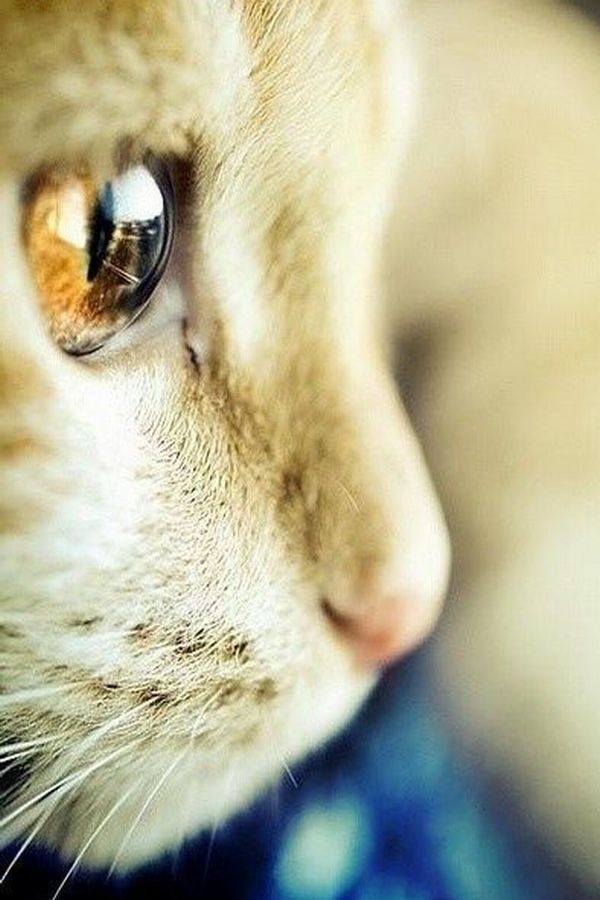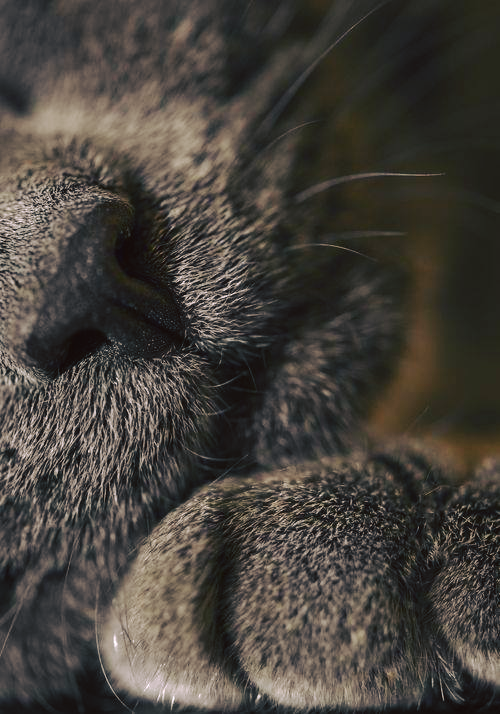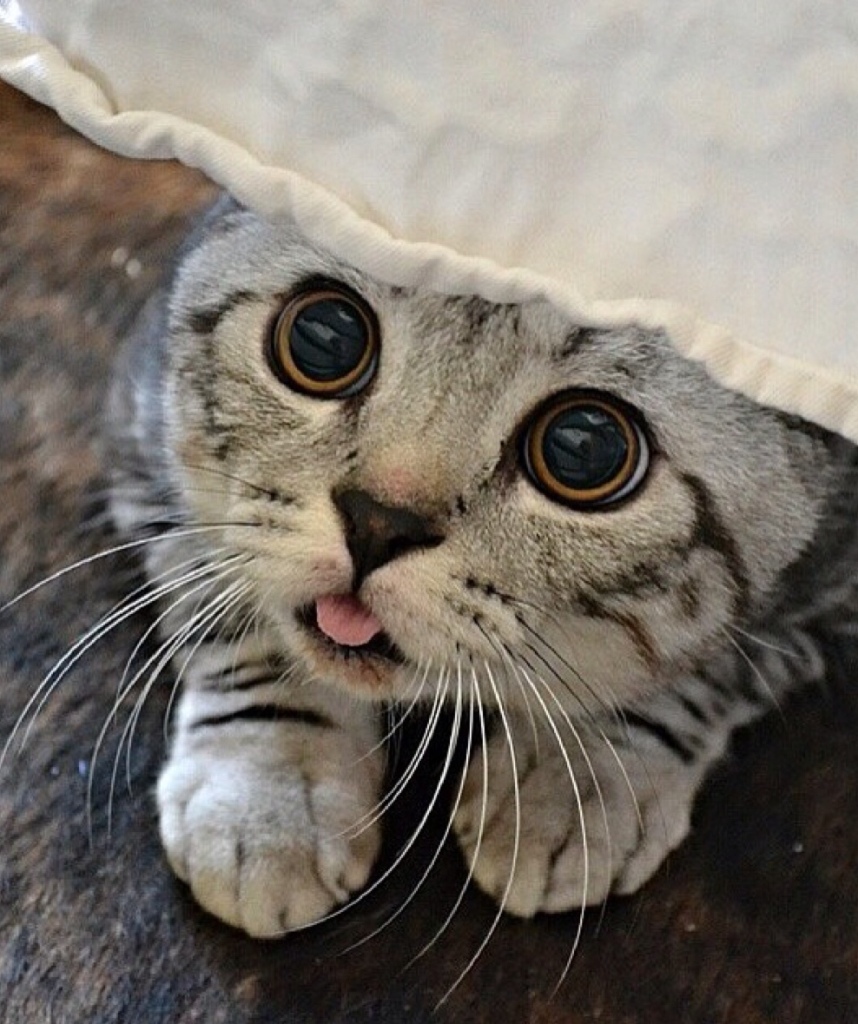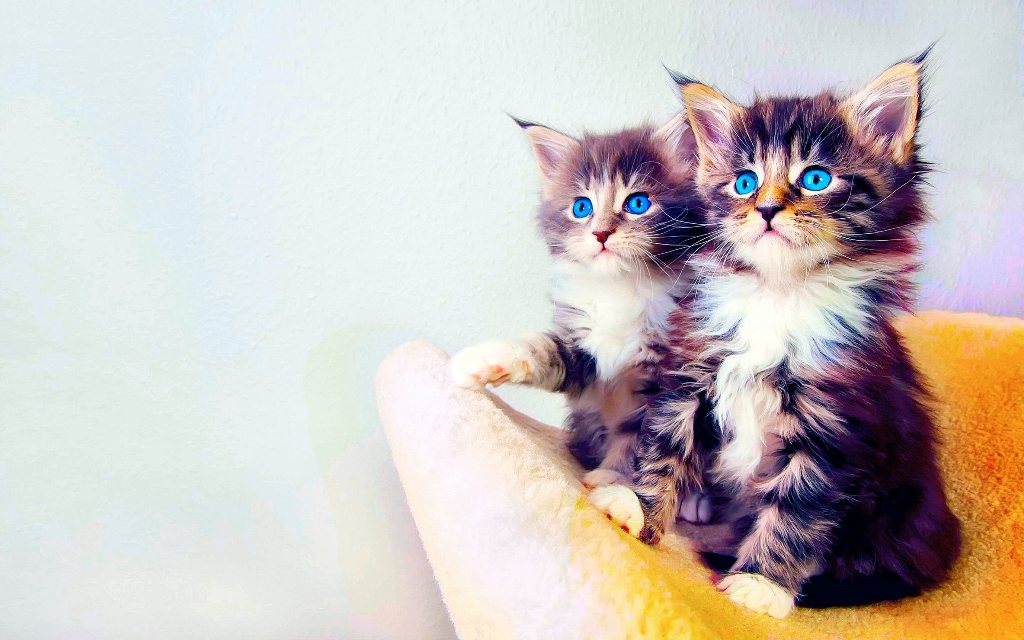The behavior of cats is mostly misunderstood, even by highly experienced cat owners. If there’s one trait that cat owners enjoy most, its the independent nature of their little feline friends. We should feel honored when a cat decides to give us the time of day. Any cat gleefully asking for a head rub or a belly scratch is too much to resist for most cat lovers.
Have you ever looked at your cat and wondered what your cherished pet is thinking? Or questioned why cats do what they do and act as they act? Cats can be a mystery. However, much of their behavior can be easily understood if you know the reasons behind it. Being pet owners, it’s part of our job to learn how to better care for our beloved cats. Here are some general cat facts provided by Ritely that should help bring you closer to your little feline friend.
Eyes:

Many people believe that cats are colorblind. This is a big misconception, and in fact, cats can see most colors except for oranges and reds. The colors that they can see are less intense than the shades that humans can see, but they can see color. Other than being mildly colorblind, felines have excellent eyesight. Their eyes are so precise that they can target a place to jump and land precisely on that target. They can also see extremely well at night because a mirror-like membrane in their eyes reflects any light in the area. This reflected light helps felines to see exceptionally well at night and in dark areas.
Nose:

Cats have extremely powerful noses thanks to a unique organ located behind their teeth called The Jacobson’s Organ. In addition to their already powerful sense of smell, this organ helps cats to have a sense of smell that is 14 times stronger than a human’s sense of smell. The Jacobson’s Organ not only increases a feline’s sense of smell, but it also helps cats to analyze a scent. Cats tend to make a funny face when they use this organ, so don’t be offended if your kitty makes a grimacing face after smelling something.
Whiskers:

Whiskers on a cat’s face are long, flexible hairs that are located on their eyebrows and whisker pads. The whisker pads usually have four rows of whiskers on each side, with about 24 whiskers in total located on a feline’s face. Whiskers are a handy tool for our feline friends, as they help them with navigation and width judgment.
Navigation:
Whiskers are sensitive to moving air, which helps cats to recognize if there is something in their way. For example, if a cat is in a dark basement an obstruction to the cat’s path will change the movement of air around it. The whiskers will sense this change in the air current, and the cat will recognize if there is something in its way.
Width Judgment:

Whiskers have deep roots that lie close to nerve endings on a cat’s face. If something touches its whiskers, a cat will feel pressure on its whiskers. Also, a cat’s whiskers are about the same width as its body. For this reason, cats will use their whiskers to gauge the distance between an openings to see if it can fit through the tight space.
Tongue:

The infamous “sandpaper tongue” may be rough to touch, but it acts as an extremely useful tool for cats. Our feline friends have tongues that are covered in tiny hooks that are made out of keratin. When eating or drinking, the hooks help to scoop up food and water. But when grooming, these hooks act similar to a comb to help thoroughly clean a feline’s fur. Unfortunately, when grooming, these hooks can scoop up a lot of hair, which can be accidentally swallowed. This is the leading cause of hairballs, so if your feline friend has a lot of hair help him out by brushing his fur once a week. From their eyes to their tongue, the feline face is full of fantastic tools that help our feline friends navigate through life. Pay attention to your kitty when he is utilizing one of these fabulous facial features. You might be surprised to see how brilliant your feline friend is.
Other facts and behavior include:
Unlike dogs, domesticated cats do not engage in the formation of packs. When forced to live more closely to one another they usually would in the wild, cats will often resort to time sharing their territory whenever possible. A kitten’s tendency to be friendly and sociable comes from two sources. A predisposition from the father’s genes and learned behavior from the mother figure. A kittens learning of its socialization process is most highly formative when it is between the age of two and seven weeks old.
When recovering from a traumatic event, such as an auto accident or separation anxiety, cats can go through a reawakened socialization process. This frequently results in the cat becoming far more social after the fact. In more rare instances, felines with only slight formative bonds can become withdrawn after experiencing such trauma. Descending from solitary creatures mark out their territory and hunt alone, domestic cats have an insufficient set of body language communication skills. Typically these are merely the lifting of a paw, waging of a tail, widening or squinting of the eyes and some licking as well as rubbing.
Cats leave distinctive (to them) scent marks which demark the specific animal’s territory. If you had the right nose, could tell you quite a story. The scent is the medium by which our beloved felines make up for a limited set of body language skills. Your cat will leave its chemical marker by rubbing its scent glands all over its territory markers. Your cat will also rub it on you and other animals in the house, creating a communal scent and indicating that these are the creatures that are part of its social group.
Though most cats apparently relish a bowl of milk, many cats are unable to tolerate lactose contained in milk. Lactose can upset their stomach leading to diarrhea which is not healthy in any case. You can get special varieties of milk for such cats.
Author Bio:
Melissa Weir is a North Carolina-based freelance writer and work-from-home mother of two. In her 10 years as a professional writer, she’s worked in proposal management, grant writing, and content creation. Personally, she’s passionate about teaching her family how to stay safe, secure and action-ready in the event of a disaster or emergency.




